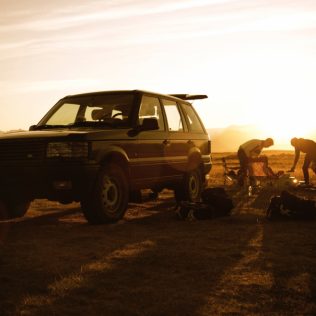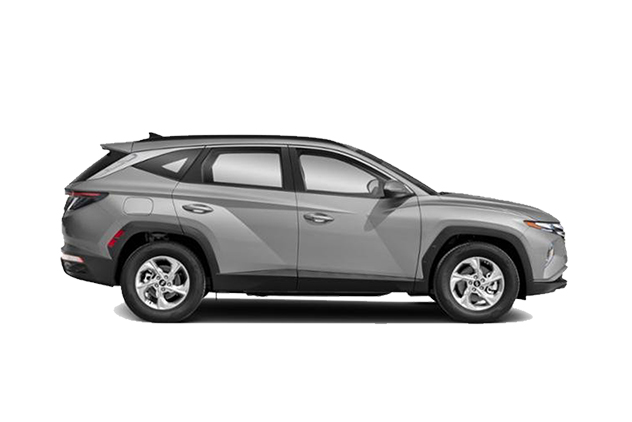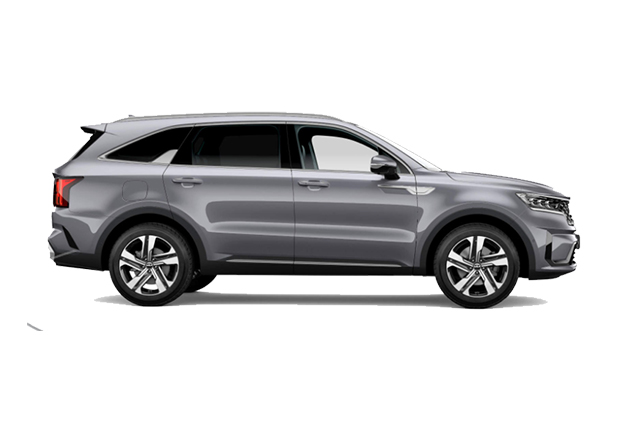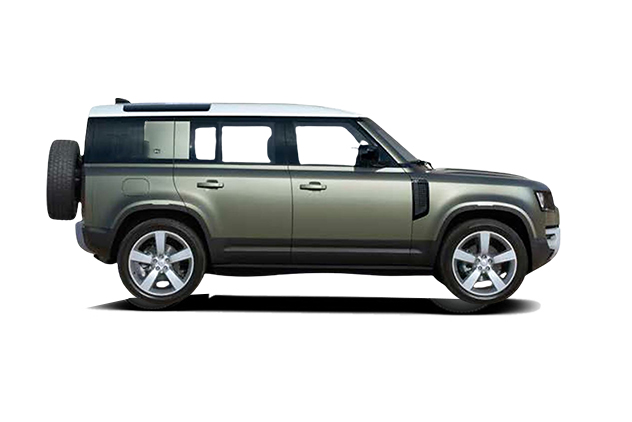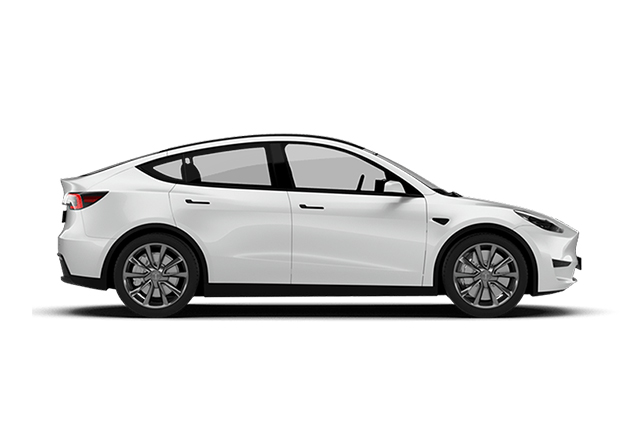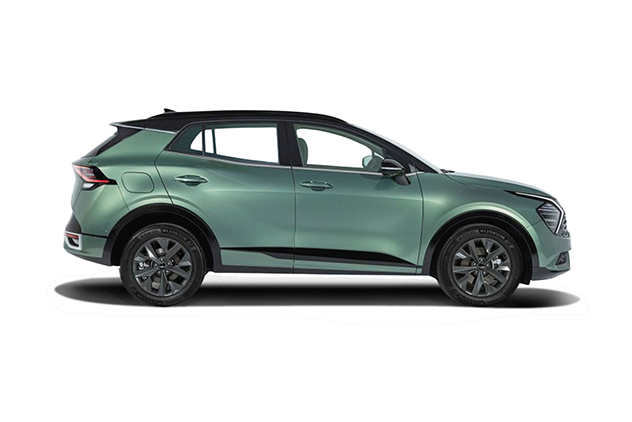Camping in Iceland is one of the most immersive and affordable ways to explore this extraordinary country. Whether you’re sleeping in a campervan beside a waterfall or pitching a tent in the shadow of a glacier, camping gives you the freedom to experience Iceland’s wild beauty up close. That said, Iceland isn’t your average camping destination. The rules can be strict, the weather is unpredictable, and not all gear is created equal.
This guide will cover everything you need to know about Iceland camping, from where you’re allowed to camp to what facilities to expect, what it costs, where to rent a campervan, and how to camp responsibly. Plus, we’ll share tips to help you avoid the rookie mistakes that can turn an epic camping trip into a soggy disaster.
- Related link: Iceland Camper Van Rental Guide
Table of Contents
- Camping Options in Iceland
- Where Am I Allowed To Camp in Iceland?
- What are Iceland Campsites Like?
- Camping in the Highlands of Iceland
- Year Round vs. Seasonal Campsites
- How Much Does It Cost to Camp in Iceland?
- Packing List for Camping in Iceland
- Iceland Camping Safety Tips
- Frequently Asked Question
Camping Options in Iceland
There are two main options for camping in Iceland: camping in a vehicle such as a campervan or a motorhome and camping in a tent. The best option for you depends on your comfort level, the season, and how much flexibility you want.
Both have significant advantages and disadvantages that you should carefully consider before deciding which option is best for your Iceland trip.
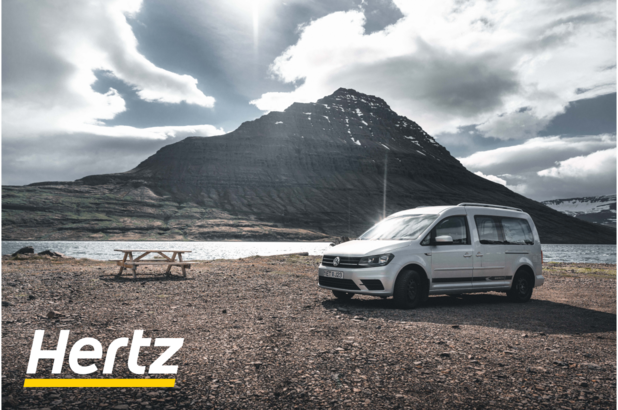
Campervan or Motorhome
Campervans and motorhomes are by far the most popular way to camp in Iceland, and it’s easy to see why. When you rent one it’s like travelling with a mini apartment on wheels, and it comes with alot more privacy and comfort than a tent. Plus, it guarentees you can stay at any available campsite, regardless of the weather. Even in the summer the weather in Iceland can be rainy at times, and no one wants to set up a tent in the rain!
Although they are more expensive than tents, campervans and motorhomes are still cheaper than hotels and Airbnbs, which you may have to use if you’re tent camping and the weather turns bad. Plus, you need to factor in the cost of your rental car on top of the cost to rent the camping equipment. So, they could provide real value for money if you plan to spend more than a week in Iceland. Just think, you could get both accommodation and a rental vehicle to tour with for the price of one.
You should note, however, that campervans are very different from regular rental cars. Never sleep in a compact car or even in a 4X4 SUV. They are not adequately set up for this purpose and will be incredibly uncomfortable.
Rooftop Tent
A great hybrid option that’s gaining popularity is the rooftop tent. These pop-up tents are mounted on top of a 4×4 vehicle, offering flexibility of a campervan with more of a traditional camping feel. They’re cheaper to rent and come with camping gear, but you’re still exposed to the elements more than in a van.
Tent Camping
Tent camping is a budget-friendly and immersive way to experience Iceland’s raw beauty, especially for adventurous travelers who want to sleep close to nature. However, it’s only recommended between June and August when campsites are open and the weather is relatively stable. Even in summer in Iceland, conditions can be cold and unpredictable, so you’ll need a durable, waterproof tent, an insulated sleeping mat, and a true four-season sleeping bag. Campsites don’t rent gear, so you’ll need to bring your own or rent in Reykjavik.
Under limited conditions, you may camp for one night on uncultivated land if no campsite is nearby, but strict rules apply, and this shouldn’t be relied on. Tent camping outside of summer is strongly discouraged due to storms, freezing temperatures, and closed facilities. If you’re well-prepared and respectful of the elements, though, summer tent camping can be a uniquely rewarding way to experience Iceland.
Where Am I Allowed To Camp in Iceland?
In Iceland, you can’t just pull over and pitch a tent wherever the view looks good (even if it’s tempting). Iceland has strict rules to protect its fragile ecosystems:
- If you’re in a campervan, motorhome, or car, you must stay at designated campsites.
- Tent camping is allowed only in registered campsites. The only exception is if you are far from a campsite and camping with no more than three tents for one night on uncultivated land. Even then, it must not be protected land or private property.
- You’ll need written permission from the landowner if you plan to camp on private farmland, stay more than one night, or set up more than three tents.
The short version? Plan to camp at official sites. It’s safer, legal, and usually more scenic than going rogue.
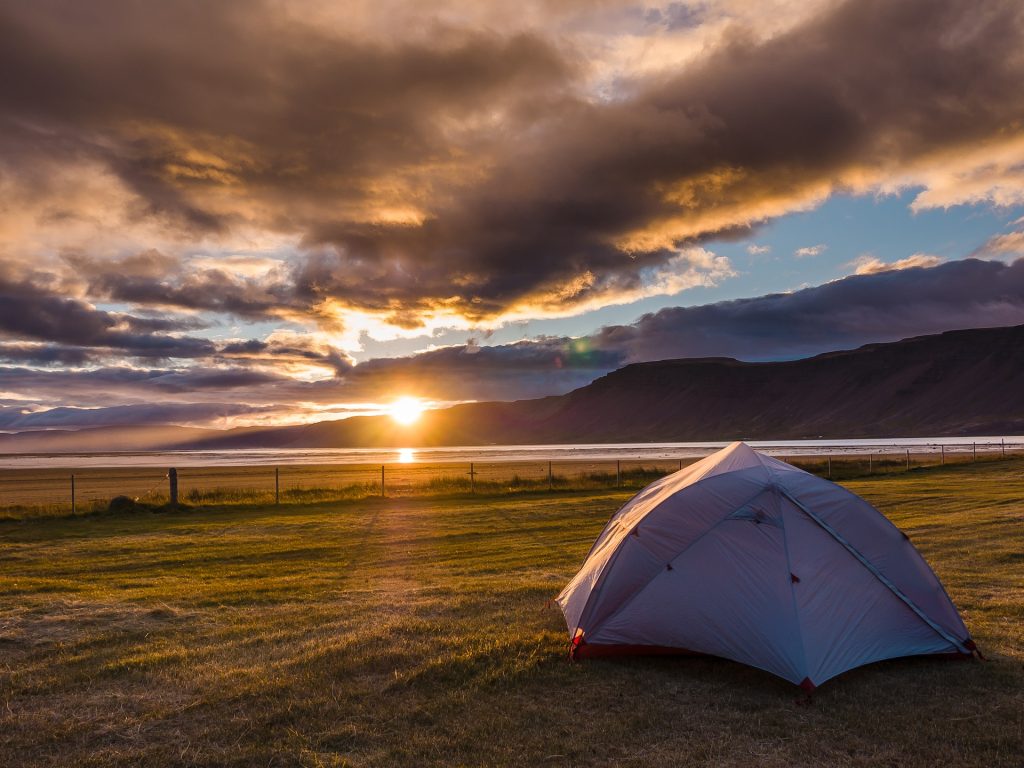
What are Iceland Campsites Like?
There are well over 200 campsites in Iceland, situated in easy-to-access areas along Iceland’s major routes. Tourists choosing to camp can always be within a reasonable distance of major attractions and other campsites should they decide to spend more than a day in any area. Campsites in Iceland range from basic fields with toilets to fully equipped rest stops with hot showers, shared kitchens, laundry, and even geothermal pools. Many are set in gorgeous locations, overlooking fjords, tucked into valleys, or just a short walk from waterfalls.
Some campsites also provide recreational activities like swimming pools, kayak rentals, horseback riding, and playgrounds for kids. Beyond the standard amenities, some spots provide great views of the ocean, surrounding mountains, and even geothermal on-site.
Here are a few examples of popular and well-equipped campsites around the country:
Laugardalur Campsite (Reykjavik): Just minutes from downtown, this site has showers, kitchens, laundry, electricity, and access to the Laugardalslaug geothermal pool. It’s the ideal first or last stop on your trip.
Vogar Campsite (Lake Mývatn): Well-located near hot springs and volcanic attractions in the north. It includes hot showers, a kitchen, and solid wind protection.
Skaftafell Campsite (Vatnajökull National Park): A favorite among hikers. It’s located at the base of glaciers with easy access to trails and views.
Hellissandur Campsite (Snæfellsnes Peninsula): A peaceful option with great access to the nearby national park and the coast.
Many sites include amenities like:
- Toilets and outdoor sinks
- Showers (sometimes extra cost)
- Kitchen shelters
- Electricity hookups for vans
- Wi-Fi or charging points
- BBQ areas or picnic benches
- Laundry machines
Larger sites are often first-come, first-served, while some popular spots now allow online booking. Plan to arrive by late afternoon in busy areas to grab a good spot.
Iceland Campsites/Campground Location Map
Camping in the Highlands of Iceland
Camping in Iceland’s Highlands is an incredible experience, but it’s not for beginners. The Iceland Highlands are remote, often only accessible via rugged F-roads that require a 4×4 vehicle, and open only from late June to early September. Weather conditions can change fast, and services are limited.
There are a few established campsites in the Highlands, such as:
Landmannalaugar: The most famous Highland campsite, known for its geothermal hot springs, colorful rhyolite mountains, and proximity to the Laugavegur hiking trail. Facilities are basic but include toilets, cold water, and tent pitches.
Þórsmörk (Thórsmörk): Accessible only via river crossings, this remote and beautiful valley is popular with hikers. There are huts and campsites with toilets and kitchen shelters, but no shops or services nearby.
Askja (Dreki Campsite): A dramatic volcanic area in the Highlands with camping facilities managed by park rangers. Bring your own supplies because there are no shops.
If you’re planning to camp in the Highlands:
- Travel in a 4×4 vehicle
- Carry fuel, food, and extra clothing
- Check road.is daily for closures and updates
- Avoid river crossings unless you are experienced
- Be completely self-sufficient and prepared for emergencies
Year Round vs. Seasonal Campsites
Most campsites in Iceland are open seasonally, typically from mid-May through mid-September. This is when the majority of visitors come, and when tent camping is realistic. Winter camping is possible, but only in a campervan or motorhome with proper insulation and heating. Tent camping in winter is not recommended and often unsafe. Fewer than 30 campsites stay open year-round, and even those may reduce their services in the off-season. If you’re traveling in winter, always make sure to confirm that your route includes open campsites and have a backup plan in case roads close or conditions deteriorate. Further, always check weather updates at vedur.is and road conditions at road.is.
How Much Does It Cost to Camp in Iceland?
Depending on the location, season, and amenities, campsite and camping gear rental prices can fluctuate. On average, campgrounds charge between 1,500 ISK and 2,500 ISK (approx. €10–€17 / $12–$20 USD) per person per night for adults, while kids under 12 or 15 years of age can camp for free, as long as they are with a group of adults.
Campervans cost between 38,500 ISK and 72,200 ISK per day (approx. €275–€515 / $296–$555 USD) to rent per day, and you can fill up the car’s tank for around around $90–$100 USD (approx. €83–€93), depending on gas prices. This should last you about three days, depending on travel distance. You can check up-to-the-minute gas prices here.
Food in Iceland will cost up to $15 USD (€14) per day if you make your own meals in the campsite’s kitchen facility or up to $25 USD (€23) per meal if you visit nearby restaurants. Also note that additional costs like warm showers, electricity bills, and laundry services will be charged separately from camp fees.
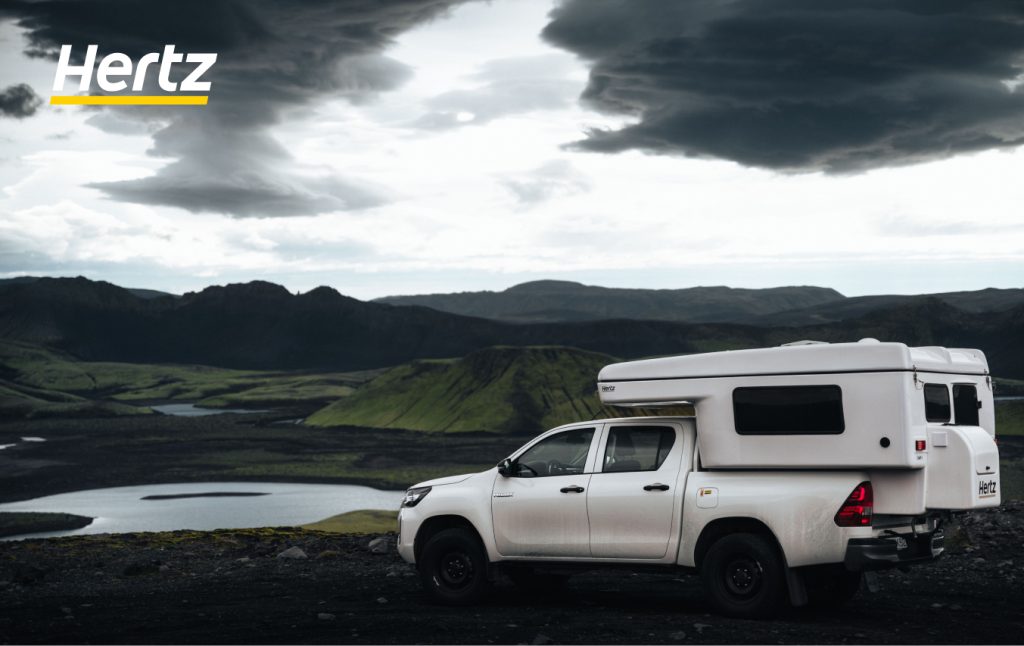
What Is the Iceland Camping Card?
The Iceland Camping Card is a prepaid pass that gives you access to over 40 campsites for a flat fee. It’s valid for 28 nights and covers:
- 2 adults
- Up to 4 children under 16
- 1 tent or campervan
The card costs 24,900 ISK (around 175€/$205 USD) and can be bought at campsites, tourist information centers, Olís petrol stations, or directly through the Hertz Iceland tour desk. It’s a great option if you’re planning to travel for a couple of weeks or more and want to save money.
Renting Gear for Camping in Iceland
If you’re renting a campervan or rooftop tent through Hertz Iceland, most of the essentials will be included: cooking equipment, mattress, table, chairs, and sometimes bedding. Still, check the details, as you may need to rent sleeping bags or request extras.
For tent campers, you’ll need to rent your gear in the capital city of Reykjavik or bring it with you. Shops like Gangleri Outfitters and Iceland Camping Equipment rent everything from tents and sleeping bags to stoves and utensils. Campsites do not rent gear.
Packing List for Camping in Iceland
Things that you will need to pack on your camping trip include:
- GPS or map app on your mobile device. For maps on mobile devices, a pre-downloaded map is advisable as some remote areas lack phone service.
- Warm, layered clothes and undergarments.
- Camping gear, which will vary depending on whether you’re in a campervan or tent camping.
- Sleeping bags, insulated pads, and sheets.
- Cooking gear, as well as cutlery and coolers.
- A waterproof, windproof, 3 or 4-season tent.
- Toiletries, including tissue paper, wet wipes, and soap.
- A reusable water bottle to stock up on fluids between stops.
You may also want things like foldable chairs, campsite extension cords, extra blankets, a flashlight or headlamp, and a power bank for charging.
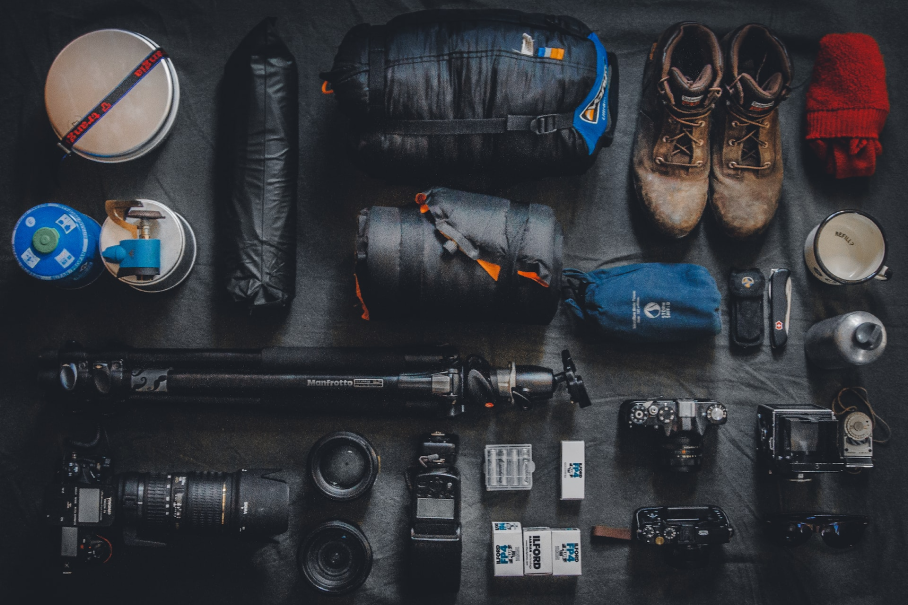
Iceland Camping Safety Tips
Staying safe while camping in Iceland will ensure that your group can enjoy their trip to the fullest. Here are some safety tips to keep in mind when you’re travelling in Iceland:
- Always check the weather forecast at vedur.is
- Monitor road conditions at road.is
- Register your travel plan at safetravel.is
- Don’t camp on moss, farmland, or protected land
- Know where the next gas station is before setting off
- Be cautious with river crossings as some roads (especially F-roads) require 4x4s
- If you wonder how to operate and use the Hilux Camper and Motorhome before renting the car, you can refer to our Iceland Hilux camper user manual and Iceland motorhome user manual for more information.
Highly recommend you also read our top 15 Iceland safe driving tips if you plant to camp around Iceland with a campervan.
Final Tips for Planning Your Iceland Camping Trip
If you’re camping in summer, book early since vehicles and gear sell out fast, and campsites near popular Iceland attractions can fill up by evening. The Camping Card is worth considering for trips longer than 10 nights. Always have a backup accommodation plan in case of bad weather or full campsites.
Guided camping tours are also available for travelers who want a stress-free experience. These are great if you’re nervous about driving or unsure about gear and they often include lesser-known spots you might not find on your own.
And while camping under the northern lights sounds magical, remember: it doesn’t get dark enough in summer to see them. For aurora sightings, you’ll need to visit in fall or winter and stick with a campervan rather than a tent.
Iceland Camping FAQs
-
- Is it allowed to camp anywhere in Iceland?
No. Wild camping is heavily restricted in Iceland to protect its fragile environment. You must camp at designated campsites unless you meet very specific conditions, such as tent camping on uncultivated land far from any established site, for one night only, and with permission if required. Camping is not allowed in national parks, private land, or protected areas without explicit consent.
- Is it allowed to camp anywhere in Iceland?
-
- Can you sleep on the side of the road in Iceland?
No, sleeping in your vehicle on the side of the road or in undesignated areas is not allowed. You must stay in registered campsites when traveling in a campervan, motorhome, or car. This applies even in remote areas and is enforced by local authorities.
- Can you sleep on the side of the road in Iceland?
-
- Do campsites fill up in Iceland?
Yes, especially in the summer months (June to August). Popular campsites near tourist routes or major attractions can fill up by early evening. While many sites are first-come, first-served, some now allow online booking, and reserving ahead is recommended for peace of mind during peak season.
- Do campsites fill up in Iceland?
-
- Do you need cash in Iceland for camping?
Rarely. Most campsites accept debit and credit cards. However, it’s a good idea to carry a small amount of Icelandic króna (ISK) just in case, especially if you’re visiting more remote areas or if the card machines are temporarily down.
- Do you need cash in Iceland for camping?
-
- Where can I camp for free in Iceland?
Free camping is extremely limited and only applies under strict conditions for tent campers, such as being far from any designated site, on uncultivated land, for one night only, and not on private or protected land. In practice, it’s best to use official campsites, which are numerous and affordable.
- Where can I camp for free in Iceland?
-
- Can you camp in parking lots in Iceland?
No. Camping or sleeping overnight in a vehicle in parking lots, roadside pull-offs, or scenic viewpoints is prohibited. You must use a registered campsite with appropriate facilities.
- Can you camp in parking lots in Iceland?
-
- How easy is it to camp in Iceland?
Camping in Iceland is relatively easy if you plan ahead. There are over 200 campsites across the country, and most are well-maintained with basic facilities. Renting a campervan simplifies things even further. However, weather, road conditions, and strict regulations mean flexibility and preparation are key to a smooth experience.
- How easy is it to camp in Iceland?
Camp and Travel Responsibly
Camping in Iceland is a privilege and comes with a responsibility to protect the landscape. Follow the “leave no trace” rule. Pick up all your trash, stick to marked paths, never camp off-road, and respect the quiet and privacy of others. Iceland’s natural environment is what makes camping here so unforgettable. Let’s keep it that way.
Whether you’re taking on the Ring Road in a campervan or finding quiet moments in a tent beneath the midnight sun, Iceland is full of unforgettable camping opportunities. Need a ride that’s adventure-ready? Book your campervan or rooftop tent with Hertz Iceland and hit the road with everything you need already packed.
